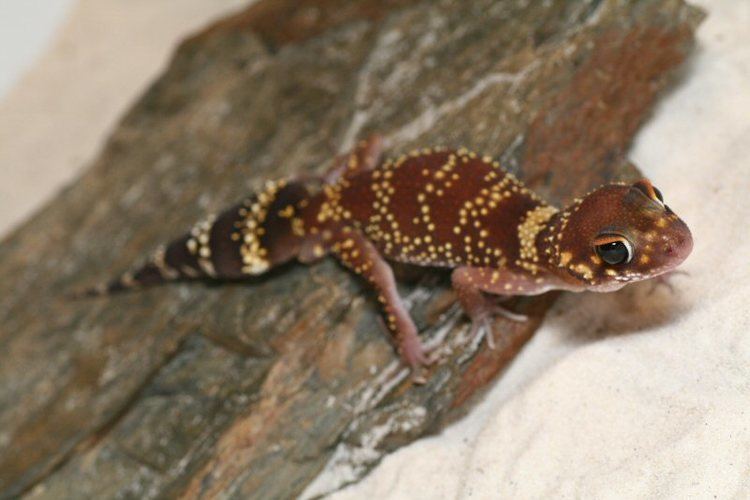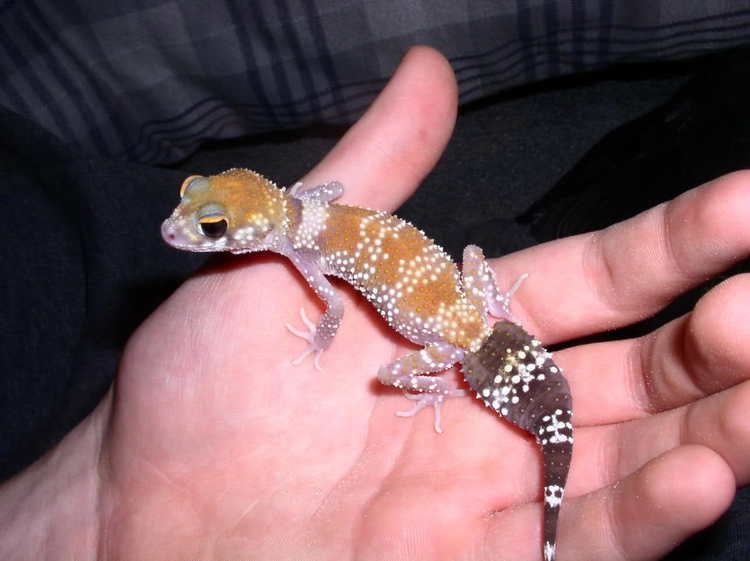Suborder Sauria Higher classification Underwoodisaurus Order Scaled reptiles | Subphylum Vertebrata Infraorder Gekkota Genus Underwoodisaurus Phylum Chordata Rank Species | |
 | ||
Similar Underwoodisaurus, Reptile, Nephrurus, Three‑lined Knob‑tail, Nephrurus amyae | ||
Underwoodisaurus milii
Underwoodisaurus milii (synonym, Nephrurus milii ) is a species of gecko in the family Carphodactylidae. The species is commonly known as the thick-tailed or barking gecko, referring to its distinctive plump tail and sharp, barking defensive call.
Contents
- Underwoodisaurus milii
- Repashy grub pie reptile vs underwoodisaurus milii
- Etymology
- Description
- Behaviour
- Distribution
- Conservation status
- References

Repashy grub pie reptile vs underwoodisaurus milii
Etymology
The specific name, milii, is in honor of French sailor and naturalist Pierre Bernard Milius.
Description

Thick-tailed geckos are reddish-brown with bands of white and yellow spots and paler underbelly. They usually grow to 120–140 mm in length. Their original tail is black with several pale bands, however regenerated tails have little pattern. When threatened, they will arch their backs and "bark". Thick-tailed geckos are found in rocky outcrops across southern Australia, and are slightly more cold-tolerant than many other Australian gecko species. They are nocturnal, and shelter underneath rocks or in burrows during the day. They feed on insects and small vertebrates.

Unusually for reptiles, this species forms aggregations in their retreat sites during the day. The reasons for this are unknown. However, it has been shown that this behavior results in a higher aggregate thermal inertia (they stay warmer) than would be found in solitary geckos of this and related kinds in similar circumstances. In the same source, it was suggested that aggregating for physiological benefits may precede the development of other kinds of social behavior.
Behaviour

This species, and some other species of gecko have the unusual habit of licking their eyes after eating, presumably to keep the eyeshield clean.
Distribution
They are found in southern regions of the Australia.
Their distribution in Western Australia is throughout the southwest, the goldfields, wheatbelt, and nullarbor regions to the east, and to Shark Bay in the north. They are also found at the Houtman Abrolhos and the Archipelago of the Recherche.
Conservation status
The species has not been assessed for the IUCN Red List, nor the Australian EPBC Act, and may be kept as a pet with the appropriate license in at least some states of Australia.
